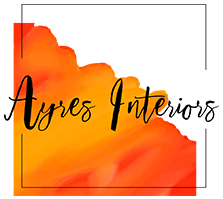“Everyone of us has had the experience of realizing that suddenly one had, for an instant, seen beyond the boundaries of the ‘ordinary.’ Such is the sudden realization that ‘I am alive.'” -Edgar Miller
Many years ago, when we were looking for our family home in Chicago, we came across several houses that were designed by artist Edgar Miller. At the time we were interested in purchasing the former Walter Guest Apartments at 2150 N. Cleveland, which he had created with fellow artist Sol Kogen in 1932. Once I saw their work, I never forgot it.
How many times have I passed by the red gate at 1734 N. Wells Street? That was once the gateway to the Kogen-Miller Studios. Or the Carl Street Studios – now private homes tucked away at 155 W. Burton Place in the heart of Old Town? And the very visible Frank F. Fisher Apartments at 1209 N. State Parkway? Driving around Old Town streets, I still see fences, windows, door trim, and carvings that have the Miller signature all over them.
Miller came from Idaho Falls, Idaho, and lived briefly in Australia with this father before returning to Idaho, graduating, and earning a scholarship to attend the School of the Art Institute of Chicago (SAIC) around 1917. The classes didn’t challenge him, or answer his deeper questions about the true meaning of art. So he joined a group of artists called the Independents at Hull House. He also opened his own art gallery called End of the Street. Later, he ran another art gallery on the top floor of the Dill Pickle Club, the epicenter of Bohemian Chicago.
In his own words, “the primitive world is no mystery to me; I knew the inside of a teepee with its acrid sagebrush smoke. Primitive art was an honest, often mystical communication, not a sophisticated posturing, however ‘sincere.'”
As Lisa Meyerowitz (Modernism in the New City) traces the artist’s progress, “by the mid-1920’s Miller began architecture and interior design work, remodeling homes and apartments with artist Sol Kogen and architect Andrew Rebori. He Later became the artistic director of the Street of Paris section at the 1933 Century of Progress Exhibition, for which he painted murals and backdrops…Miller was unusual for both designing and executing the work himself. He worked in multiple media: stained glass, tile, fresco painting, wood carving, furniture making and sculpture, and strove to create what he called a ‘total environment.'”
One fantastic book on Edgar Miller appeared in 2009 – Edgar Miller and The Handmade Home (Cityfiles Press), by Richard Cahan and Michael Williams, with exceptional photographs by Alexander Vertikoff. The book gives us rare glimpses into private homes that Miller created and the intricate, handmade details of Miller’s artistic dialogue.
As Cahan and Williams tell it, “Miller marked almost every inch…with daring and surprise. he took rustic brick, crude stone, salvaged tile, found glass and recycled steel and wood and ‘Edgarized’ the homes….”
I’ll never forget how awe-struck I was going through Miller’s building on Cleveland Street. I didn’t hear a word of what the realtor was selling. I fell into a Miller trance, moving from one studio apartment to another, my mind racing as to how we could convert this masterpiece into a single family home. The cut-lead and painted glass two-story windows; primitive mantles and intricate murals above them; colorful handmade tile around every backsplash..mesmerizing. Ultimately, we decided the project was too big and costly for us to tackle. And, in a way, I was a little relieved. I felt living under the influence of a Miller home was too overwhelming for someone as impressionable as I was. There was a certain melancholia to the interiors that cast such a spell, I wasn’t sure I could avoid getting swallowed up in the richness and details and forget that I had a life outside of this intimate world.
But I never forgot those details, and still love adding a few Miller influences into my clients’ homes on occasion – primitive art pieces; handmade tiles in unexpected places; window slivers on stairways; wrought-iron banisters – and unmistakable Miller colors.
I realize I need a home that breathes, changes, and sometimes disappoints. Then you get busy and make some changes and feel renewed. In a Miller Time warp, you wouldn’t dare touch one piece of artistic wonder. His works actually belong in museums, yet they are preserved in private homes. I would love to be able to tour a Miller home occasionally, but living in his primitive, historical context…well, it isn’t for me.































No Comments